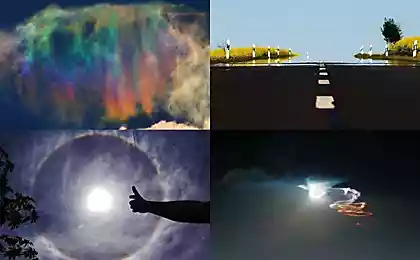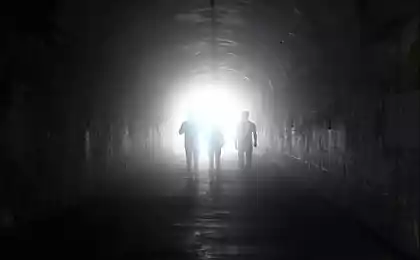827
Rainbow in a glass and other experiments on immiscible liquids

Have you ever heard that water and oil don't mix? Today we will examine the truth of this statement, and then will experiment with some other liquids. The liquid has properties such as Miscibility with other liquids, viscosity and density. About these qualities of the substances we will now discuss. And not only talk, but also look at how they manifest themselves... in the regular glass.
Water and oil You will need: 60 ml water; 60 ml vegetable oil; a small transparent glass; food coloring. First pour in a glass of water. Add a little food coloring and mix. Then slowly pour the oil in the same Cup. What do you see? Which layer is on top?
Seal the Cup with a plastic lid or your hand and shake the glass until the two liquids will not mix. Again put the glass and see what happens. You mixed water and oil? There is such a thing as a "Miscibility". It characterizes the ability of two substances to mix. A few substances of oil and water called not susceptible to confusion because they don't mix. The oil layer will be on top, the water will be the bottom layer. The reason for this is the difference in density of the two fluids. Density of a substance is the ratio of its mass (weight) to its volume. Oil density below the density of water, so the oil will appear at the top.
Liquid multi-layered "traffic light" You will need: 60 ml of artificial or natural honey; 60 milliliters of liquid for washing utensils; 60 ml water; 60 ml vegetable oil 60 milliliters of denatured alcohol; high transparent Bank; two cups for mixing; food coloring. Take a jar. Pour in the honey, he should fill one-sixth of the banks. Pour into the center of the neck to the honey smeared on the wall of the banks. After the honey is added, pour in the appropriate amount of liquid dishwashing detergent. It will stay in the liquid for washing the top and the honey on the bottom? Be careful and subsequent fluid pour very slowly, because they are less viscous than honey and dishwashing detergent and mix easier than the previously added liquid. And we don't need to mix them. So first, pour in the colored water, then vegetable oil and then coloured methylated spirits.
On a sheet of paper make a chart that reflects the order in which the liquids were poured into the jar. Whether each fluid a separate layer? Take note of those properties that distinguish fluids in the Bank from each other. The first such property is color. The second distinctive quality of each of the fluids is the viscosity. The property, which is responsible for the position of a layer in the Bank, is the fluid density. What is the dependence of the position of the liquid in the Bank from its density?
Another quality is nesmeshivaemost. It allows the liquid to remain separate layer. As you have seen in the first experiment, oil and water don't mix. On the other hand, water and denatured alcohol mix and form a single layer. Water and dishwashing detergent is also mixed. Mix pairs of the liquid in the glass and see what happens, whether the layers are formed. Which liquids will mix with each other, and which are not. In a few minutes again look at the effect. Had not formed if the liquid separate layers?

Rainbow in a glass
You will need: four food dye of different colors (example: red, yellow, green, and blue); five tall clear plastic cups; 180 grams of sugar; a tablespoon (for measuring); 240 milliliters of water. In the first beaker add 15 grams (1 tablespoon) of sugar. In the second glass add 2 tablespoons of sugar. Three tablespoons in a third Cup and four in the fourth. In each glass, add 45 ml (3 tbsp) water and stir to dissolve the sugar. If sugar in any of the glasses are not dissolved, add additional 15 milliliters (1 tablespoon) of water into each of the glasses. When the sugar has completely dissolved, add in each of the cups for a bit of food coloring. For each of the cups use a dye of a different color: red for first, yellow for second, green for third and blue for fourth.
In the fifth glass you can create a rainbow. Fill it a quarter blue sugar syrup. Then carefully add in a Cup of green sugar syrup. Pour the syrup carefully, spoonful by spoonful. Then add the yellow sugar syrup, and then red. Add the same spoon cautiously, avoiding mixing of the layers. What words would you describe the colored substance in the glass? The amount of dissolved sugar in the liquid determines its density. Blue solution is most saturated with sugar and, consequently, the most dense. Other solutions are less dense than the blue, so they will be placed on top of it. The dense syrup will settle at the bottom. The solutions, despite the difference in density, lend themselves to mixing. Therefore, clear boundaries between the liquids, which we could observe in the first experiment, will not. But if done carefully enough, the liquid will be relatively separate layers. What do you think will happen if you mix all of the liquid in the glass? In the course of scientific experiments care should be taken. Components are not food. The dishes after a series of experiments should be thoroughly washed.
Source: brainswork.ru






















